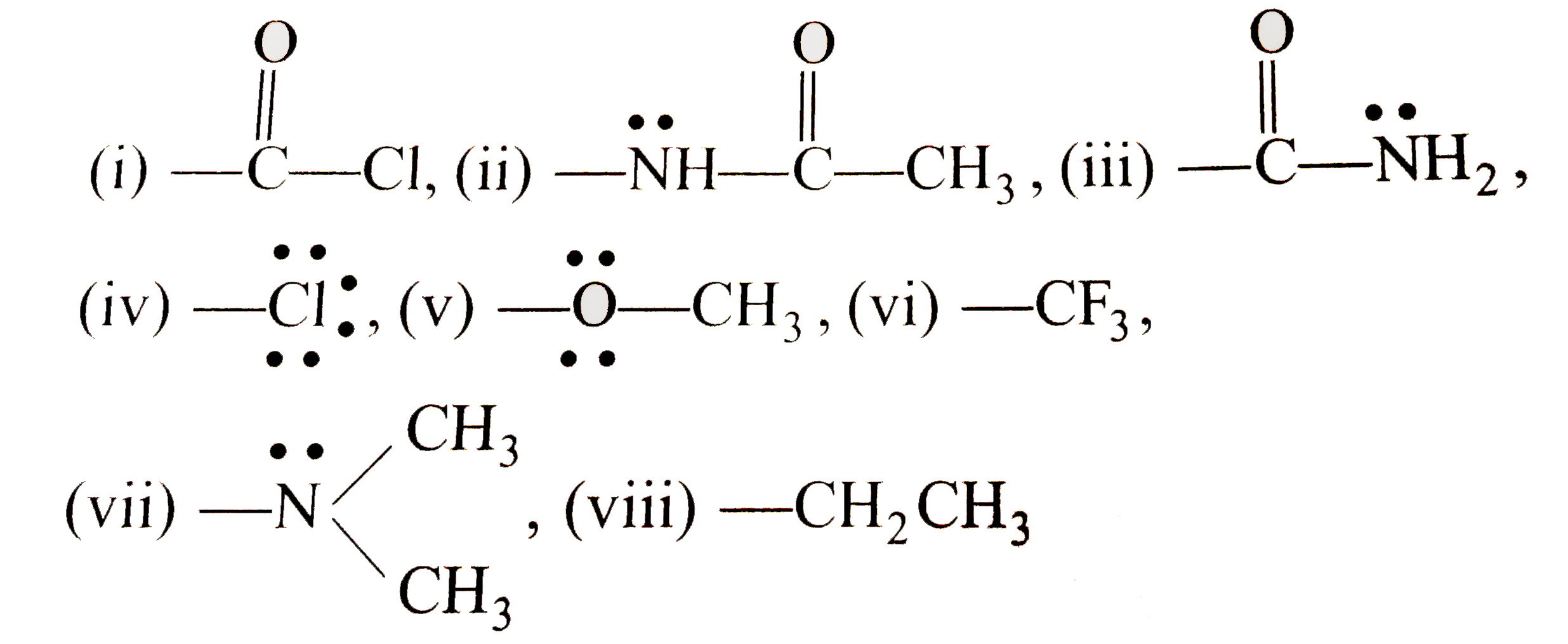(i) (ii) (iii) (iv) (v) (vi)
(vii) (viii) (ix)
Number of molecules in which lone pair of electrons on the central atom is present in pure s-orbital
The correct Answer is:6(except a,b and c)
Step by step video, text & image solution for (i) NH_(3) (ii) N_(2)H_(4) (iii) HN_(3) (iv) PH_(3) (v) H_(2)S (vi) AsH_(3) (vii) SbH_(3) (viii) H_(2)Se (ix) H_(2)Te Number of molecules in which lone pair of electrons on the central atom is present in pure s-orbital by Chemistry experts to help you in doubts & scoring excellent marks in Class 12 exams.
Updated on:21/07/2023Topper's Solved these Questions
- NITROGEN & OXYGEN FAMILYBOOK - RESONANCECHAPTER - NITROGEN & OXYGEN FAMILYEXERCISE - Exercise 2 (Part-III : One or more than one option correct type)
32 Videos
- NITROGEN & OXYGEN FAMILYBOOK - RESONANCECHAPTER - NITROGEN & OXYGEN FAMILYEXERCISE - Exercise 2 (Part : IV Comprehension)
13 Videos
- NITROGEN & OXYGEN FAMILYBOOK - RESONANCECHAPTER - NITROGEN & OXYGEN FAMILYEXERCISE - Exercise 2
29 Videos
- METALLURGYBOOK - RESONANCECHAPTER - METALLURGYEXERCISE - INORGANIC CHEMISTRY(Metallurgy)
42 Videos
- NITROGEN CONTAINING COMPOUNDSBOOK - RESONANCECHAPTER - NITROGEN CONTAINING COMPOUNDSEXERCISE - ORGANIC CHEMISTRY(Nitrogen containing Compounds)
30 Videos
Similar Questions
Classify the following groups as ortho, para or meta directing when present on benzene nucleus.
(i) −CH3,(ii)−NH2, (iii) −NO2, (iv)−COOH, (v) −OH, (vi) −SO3H,
(vii) −X(halogen),
(viii) OCH3, (ix) −CHO, (x) −CN
(B) Classify the following goups as activating or deactivating with respect to further electrophilic substitution of the aromatic ring.
(i) −NH2 (ii) −NO2 (iii) −SO3H, (iv) −CH3 (v) −CI, (vi)−CN.
( C) For each of the following substituents indicate whether in donate electron or withdraw electron.

View SolutionAmong B2H6,B3N3H6,N2O,N2O4,H2S2O3 and H2S2O8 the number of molecules containing covalent bond between two atoms of the same kind is
View Solution
Knowledge Check
The number of lone pairs of electrons on the central atoms of H2O,SnCl2,PCl3 and XeF2 respectively are
A2,1,1,3B2,2,1,3C3,1,1,2D2,1,2,3The number of lone pairs of electrons on central atom of H2O,SnCl2,PCl3andXeF2 respectively are:
A2,1,1,3B2,2,1,3C3,1,1,2D2,1,2,3Assertion Bond angles of NH3,PH3,AsH3 and SbH3 decrease in order as mentioned
Reasoning The central atom in each possesses a lone pair .ABoth A and R are correct and R is the correct explanation of ABBoth A and R are correct and R is not the correct explanation of ACA is correct R is wrongDA is wrong R is correct
Consider the following species:
(i) CH+3
(ii) (C3H5)3Al
(iii) HCHO
(iv) CH4
(v) (C2H5)3N
(vI) TiCl4
(vii) CO2
(viii) SiCl4
(ix) BF3
the find out total number of species which can act as Lewis acid.
View Solution(a) What is the maximum and minimum oxidation states of nitrogen in its compounds ? Given one example each .
(b) What is the oxidation number of N in each of the following ?
(i) NH3 (ii) N2H4 (iii) HN3 (iv) NO−2 (v) N2O (vi) HCN (vii) N2 (viii) NH2OH (ix) HNO3 (x) NO2.
(c) What is the oxidation state of hydrogen in each of the following ?
(i) H+ (ii) H2 (iii) LiAlH4 (iv) HCl (v) LiH
View SolutionCold dil. H2SO4 will completely dissolve :
(i) Pb (ii) Fe3O4 (iii) Fe (iv) Cu (v) Mg (vi) MgO
(vii) CoCO3 (viii) CuCO2 (ix) SrCO3
View SolutionFind the number of molecules having two Ione pair of electrons on central atom.
I+3,XeF2,XeF4,H2O,NH−2,H2S,H2SO4,NF3
View SolutionAssertion Bond angles of NH3,PH3,AsH3 and SbH3 decrease in order as mentioned
Reasoning The central atom in each possesses a lone pair .
View Solution
